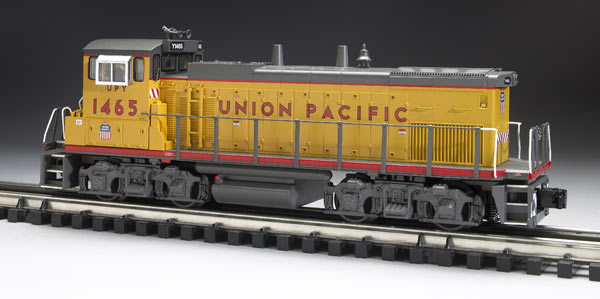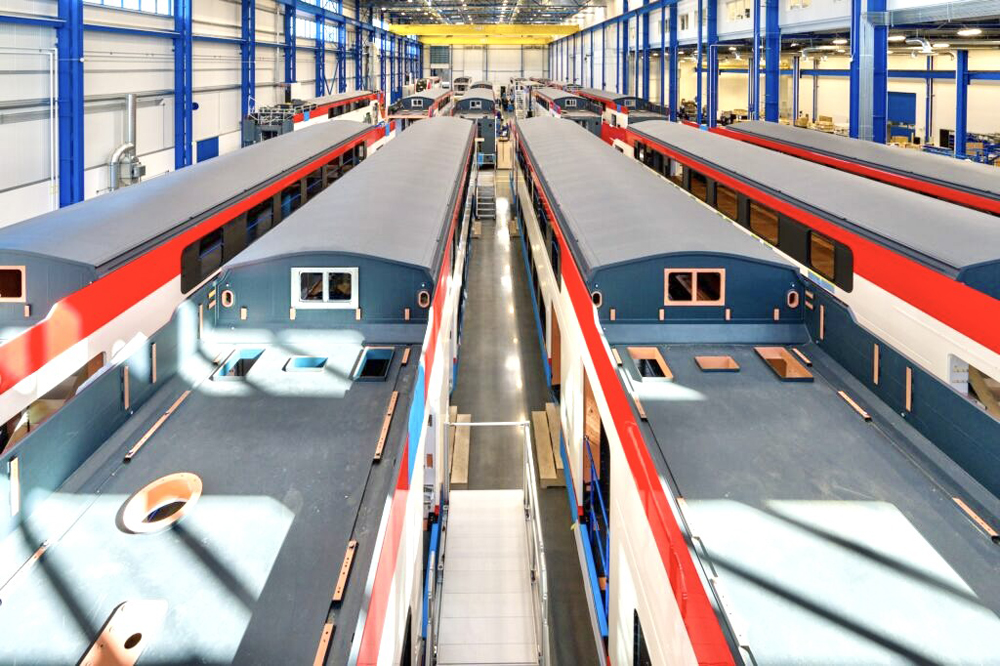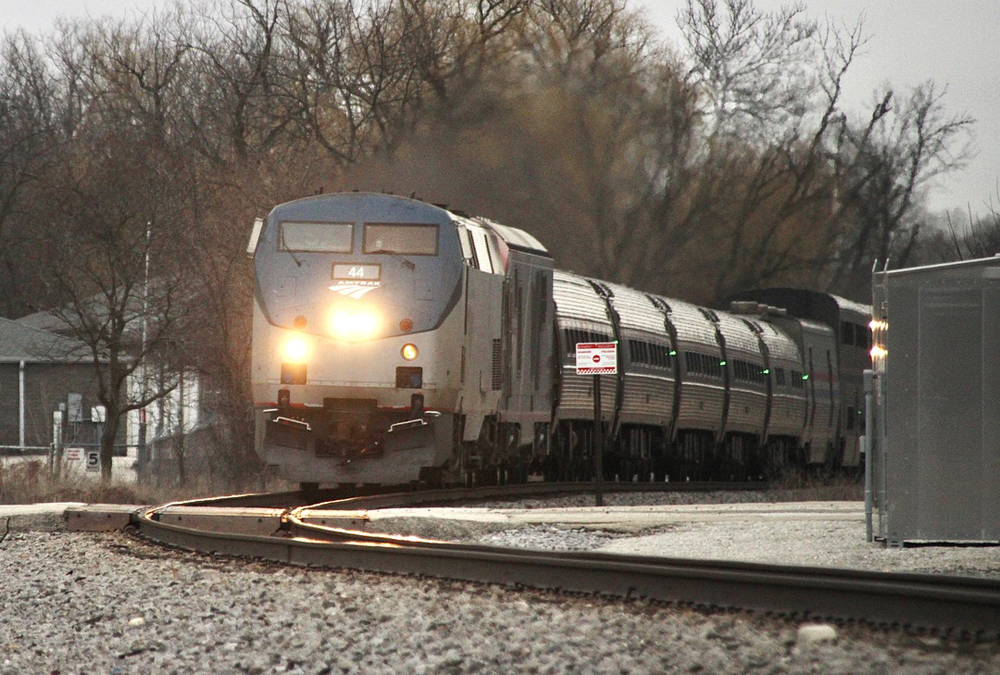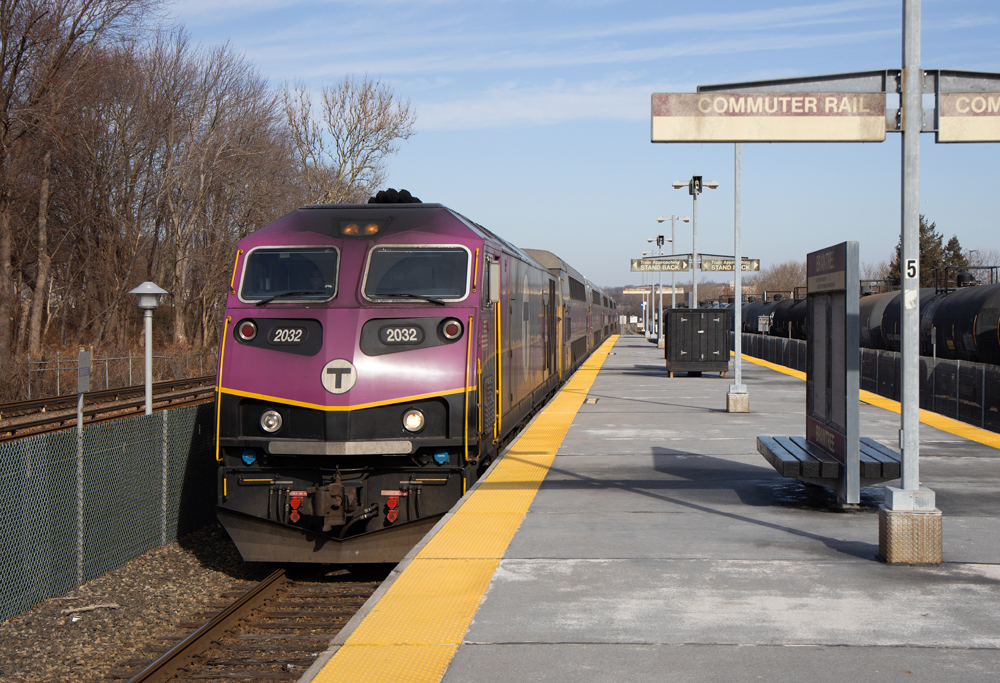Our sample of the new O gauge model in the RailKing line from MTH Electric Trains is Union Pacific no. 1465, a locomotive originally owned by the Southern Pacific RR. You will note a large “UPY” on the model’s cab; on the number boards, the 1465 is preceded by the letter “Y.” Why “UPY”?
The Union Pacific is a huge railroad that has digested a number of other large carriers. Accordingly, it has a fleet of more than 8,000 locomotives to manage. It created the “UPY” designator to allow switchers to be assigned numbers in a unique series and to free other numbers for road engines.
Opening the box
Hoisting the RailKing model out of its foam cradle, you’ll note that it has a nice, compact yet solid feel to it. At first glance, you’ll see that it packs quite a bit of detail for a model with a lower price point.
Starting at the cab end (the rear of this model), the pilot has cast-in brake-line and multiple-unit cable detail and a cast-in uncoupler arm.
The decks are painted gray. The steps are smooth, but the pilot platform has a safety tread pattern. The edges of the steps are painted with white safety stripes. White stripes also accent the face of the pilot.
I always think of the section in front of the cab as the “front porch.” The “porch” on this model has notches in it for the steps leading up to the cab door. White add-on grab irons angle upward from the steps, and white handrails bracket the steps.
The porch also has two yellow add-on wire grab irons. Both sides of the cab’s face have add-on sand filler caps.
The rear of the cab has six windows (two with wiper arms), and there are three windows on each side of the cab. The engineer’s side has an enclosure or an extension of the window, which allows the engineer to lean from the window for a better view yet still be protected from inclement weather.
The front (long hood) windows also have wiper arms. Other than crew figures, there is no interior cab decoration. The top of the cab has an add-on horn. In front of the horn is an addition to the cab mounting an illuminated number board.
The sides of the long hood have latch, seam, and hinge detail that is deeply cut into the plastic. Both sides have add-on wire grab irons, and the engineer’s side has a ladder.
There are no see-through screens on the model, but the side louvers and top exhaust screens are neatly recessed into the body. The shell features ample cast-in texture that you can touch.
The top of the shell has two dummy smokestacks (there is no smoke unit in this RailKing model) and features an add-on bell.
The flat end of the shell has a headlight and number boards as well as red and white safety stripes.
Our model’s paint and decoration were excellent. The red accent stripes along the body were all clean and crisp, and the gray and yellow were neatly applied. Additional details like the UP logo, the name and number, and the nomenclature labels were neat and readable.
On the test track
Though I don’t use many switchers on my home layout, they do occupy a soft spot in my heart. The first locomotive I ever rode in was a Baltimore & Ohio switcher as a preschooler. As they say, “The rest is history.”
This O gauge model is a fun locomotive to operate. It was very responsive and able to tackle all but the most absurd tonnage loads I gave it.
The sound package was good, and I especially liked the start-up sounds. There were lots of whirs and other noises indicative of something powerful stirring to life beneath the hood. The sound of the engine ramping up and down was also positively smile-evoking.
The ProtoSound 2.0 features we tested all worked on the first try. Features such as coil coupler operation and the locomotive’s odometer worked fine.
Our low-speed average was 3 scale miles per hour, and the high-speed average was 40 scale miles per hour.
Drawbar pull was 1 pound, 7 ounces.
Although the carbody design is roughly three decades old, to me this symbolizes modern switching power. (Forget that newfangled Genset thingy. I’ll consider them mainstream locomotives when they’re operated by the local farm co-op.) MTH’s model looks good and runs nicely, and as a RailKing product it is priced right.
Price: $299.95 (no. 30-2815-1)
Features: O-31 operation, two can-style motors, ProtoSound 2.0, coil couplers














